Today we’re preparing an oven baked chicken, roasted with over a bed of fresh tomatoes, red peppers, and plenty of garlic. The addition of sweet onions and white wine, creates layers complexity and warmth. We then toss all of this together with spaghetti, creating a delicious and satisfying one pan meal.
Ingredient Notes and Substitutions
1) Fresh Oregano vs Dried – and Possible Substitutions. We’re using dried in today’s recipe. I’d go so far as to say that unless a recipe specifically calls for ‘fresh oregano,’ assume the recipe means ‘dried.’ The one word that comes to mind with fresh oregano is ‘pungent,’ and occasionally ‘intrusive,’ since fresh oregano has a tendency to steal the limelight from even the most powerful of ingredients. For this reason, it’s at home in recipes with other equally ‘powerful’ ingredients, or where a host of other fresh ingredients are present. Things like Greek salads, whole roasted fish, grilled lamb, heavy sauces, or in herbal mixes for use in stuffing pork shoulders, are all places where fresh oregano shines – and that’s pretty much it. Since today’s recipe does not fit that bill, we’re using dried.
Substitution: Dried basil or thyme (or a mix of both) at a 1-to-1 ratio.
2) Lemon Juice. Fresher is Better – but not a requirement. Today’s recipe will do just fine with bottled lemon juice, but as in virtually all cases, fresher is better, but you’d likely need to really squint to see the difference.
Is it ‘Baking’ or ‘Roasting?’ And do these words hold any substantive difference in a modern kitchen?
This is a topic I’ve been meaning to cover for a while, so here we go.
In any ‘modern’ kitchen for roughly the last one-hundred or more years, the differences between ‘roasting’ and ‘baking’ have almost entirely vanished. However, everyone from home chefs to the textbook authors for the world’s leading culinary institutes, seem determined to keep those differences alive, even those differences have become entirely semantic. After all, we definitely cannot “Oven roast a cake,” but we most definitely can “Oven bake a turkey.” Bear in mind, both are being cooked in the same oven…and at roughly the same temperature.
But why the need to create a practical difference where the distinction is almost certainly the result of wordplay?
Originally, the differences between roasting and baking had to do with cooking via exposure to an open flame versus cooking via the conduction of hot air or smoke. Since modern ovens (both household and commercial) do not use open flames, this definition had to be updated. Today, roasting is defined as “A cooking method that uses dry heat and hot air to surround the food and cook it evenly on all sides. Food can be roasted over an open fire, in an oven, or via additional heat sources.” By contrast, baking has remained simply “Cooking with dry heat, without direct exposure to a flame.”
If that sounds like a semantic difference, it largely is.
So, exactly how do modern culinary institutes really draw a difference between baking versus roasting? Mostly, it comes down to temperature and the food itself.
1) Roasting is done at higher temperatures. Roasting takes place at or above 400 degrees Fahrenheit. Note that roasting can ‘begin’ at this temperature and then be lowered later, and it is still considered roasting. Baking is done at no more than 375 degrees.
2) The Structure of the Food. Another defining difference is the structure of the food. If food starts out solid, such as meat and vegetables, or really anything that isn’t either a dough or a batter, that food is being ‘roasted.’ Anything else is being baked. This raises the question: Can we ‘bake’ solid foods if we’re cooking them at low temperatures? Unclear.
3) Fat Location. This is a strange one. If the food has a high fat content ‘on the surface,’ such as vegetables that are brushed with oil, or meats that have a thick rind of fat, that food is being roasted. What about loaves that are brushed with oil? Again, unclear.
4) Covered or Uncovered. Roasting is said to always be done open, while baking ‘can’ be done covered. This raises the question: Are we ‘roasting cakes’ that are cooked uncovered? I would say this is ‘unclear,’ except that it is perfectly clear we not ‘roasting’ cakes that are baked sans cooking lids.
The Verdict – My Personal Opinion. To my mind, given that there is no ‘truly’ clear definition of what roasting is versus what baking is, and that so many typically authoritative culinary sources stand in contradiction of one another, or are confusingly vague, I tend to side with the ‘structure of the food’ definition. Why? When I think of ‘roasting,’ I think of things like whole veggies, beef or pork roasts, or whole chickens. Naturally, since these types of foods are so often cooked at ‘baking temperatures,’ such as “Low and slow roasting,” the temperature definition – in my opinion – simply goes out the window. Meanwhile since so many loaves are brushed with oil before cooking, and while many recipes call for things like ‘dry roasted’ veggies, the ‘fat location’ definition also seems to collapse in on its own weight. The ‘covered and uncovered’ criteria, to my mind, is simply silly. This, more or less by process of elimination, leaves the ‘structure of the food’ definition.
More Poultry Favorites from Living the Gourmet
1) Cajun Chicken. Spatchcocked chicken roasted it in a spicy Cajun Butter, which – if I’m being honest – is the star of the show. This chicken cooks up crisp, moist, and pleasantly spicy, with notes of chili and earthy undertones peppered throughout.
2) Herb Roasted Chicken. A whole chicken rubbed down with a cardamom and curry spice mix, then roasted over a bed of herbs with rosemary and orange. The chicken cooks up crisp, moist, and fragrant, with rich citrus and spice notes.
3) Chicken Tandoori. Classic tandoori prepared alongside a delicious raita, which is a blissfully refreshing yogurt sauce made with masala, red onion, and cucumber, along with a tall stack of homemade naan, which we’ll be brushing with melted butter.
PrintRoast Chicken with Spaghetti
- Total Time: 1 hour 35 minutes
- Yield: 6 servings 1x
Ingredients
- 5 lb. whole chicken - rinsed and pat dry
- 1 lb. of your favorite pasta
- 3 tbs. butter
- Fresh Parmesan or Romano cheese for grating
- 1 tsp. salt
- 1 tsp. black pepper
- 1 tsp. dried oregano
- 1/2 tsp. red pepper flakes
- 2 tbs. fresh lemon juice
- 2 tbs. olive oil
- 3 medium sized sweet onions - sliced
- 2 tomatoes - quartered
- 1 head of garlic - crushed
- 2 bay leaves
- 2 tbs. capers
- 1 red bell pepper - sliced
- 3/4 cup white wine - added about 1/2 hour before the chicken comes out of the oven
- 1/2 cup water - added about 1/2 hour before the chicken comes out of the oven
Instructions
- Preheat Oven 350 degrees F.
- Clean and pat dry the chicken.
- In a oven pan place the veggies.
- Prepare the rub.
- Using half of the rub; rub the chicken down.
- Drizzle the other half of the rub over the veggies.
- Stuff one tablespoon of the butter under the chicken’s skin; half on under the skin of each side of the breast.
- Place the other two tablespoons of the butter on the veggies.
- Place the chicken in the center of the pan; around the veggies.
- Cook the chicken 20 minutes per pound or until the juices run-clear.
- About half an hour before the chicken is done add the wine and the water.
- Prepare the pasta as directed.
- When the pasta and chicken are done, lift the chicken out of the pan and toss the pasta into the pan with the veggies and the juices from the chicken and veggies.
- Place the chicken back over the pasta and serve with fresh grated Parmesan or Romano cheese.
- Prep Time: 15 minutes
- Cook Time: 1 hour 20 minutes
- Category: Main Dish

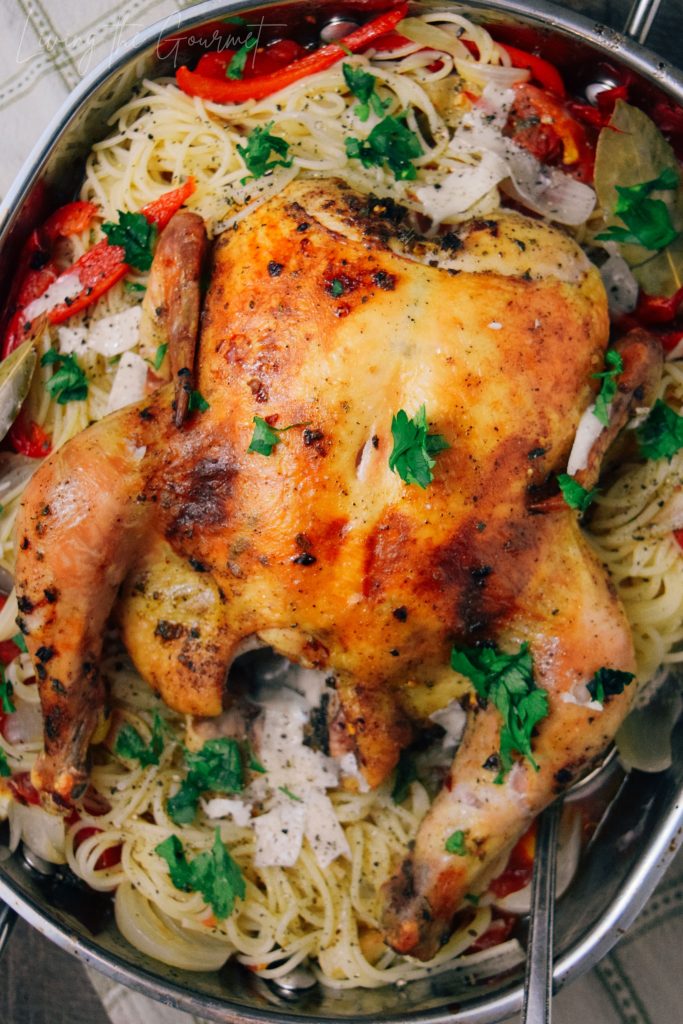
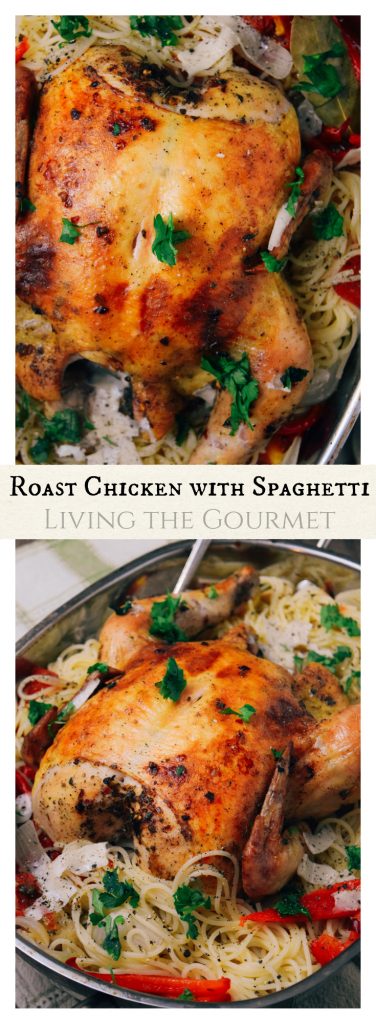
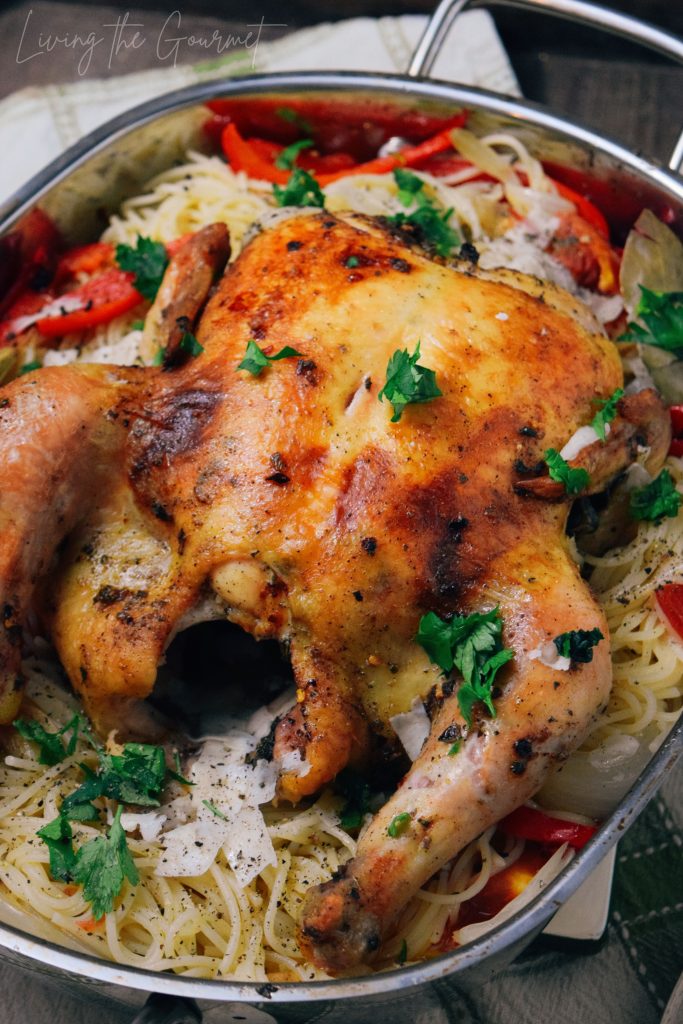
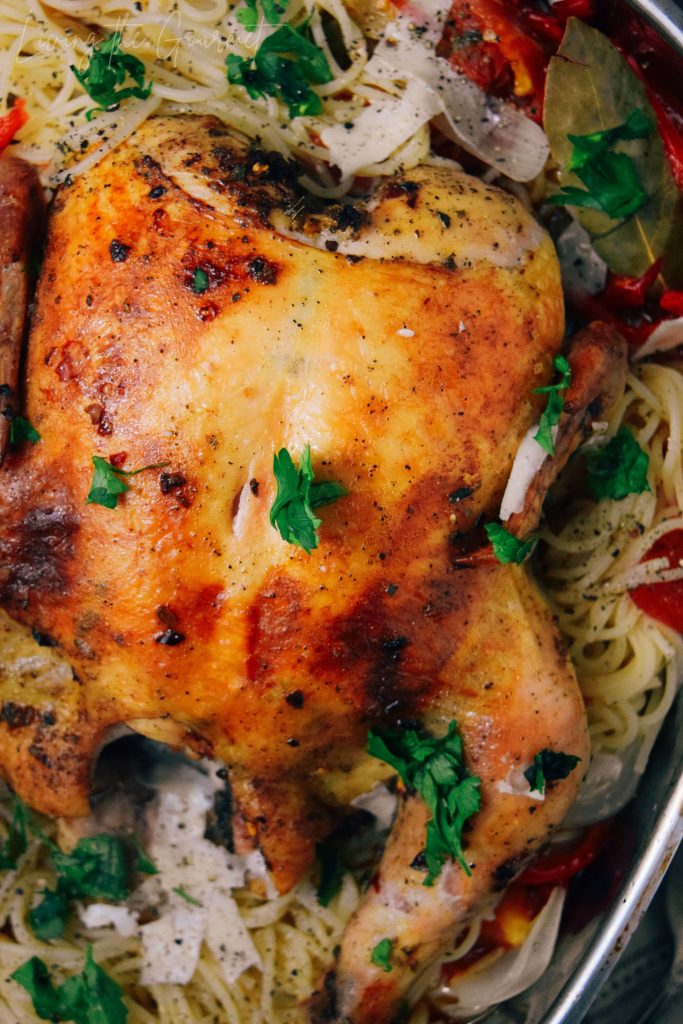
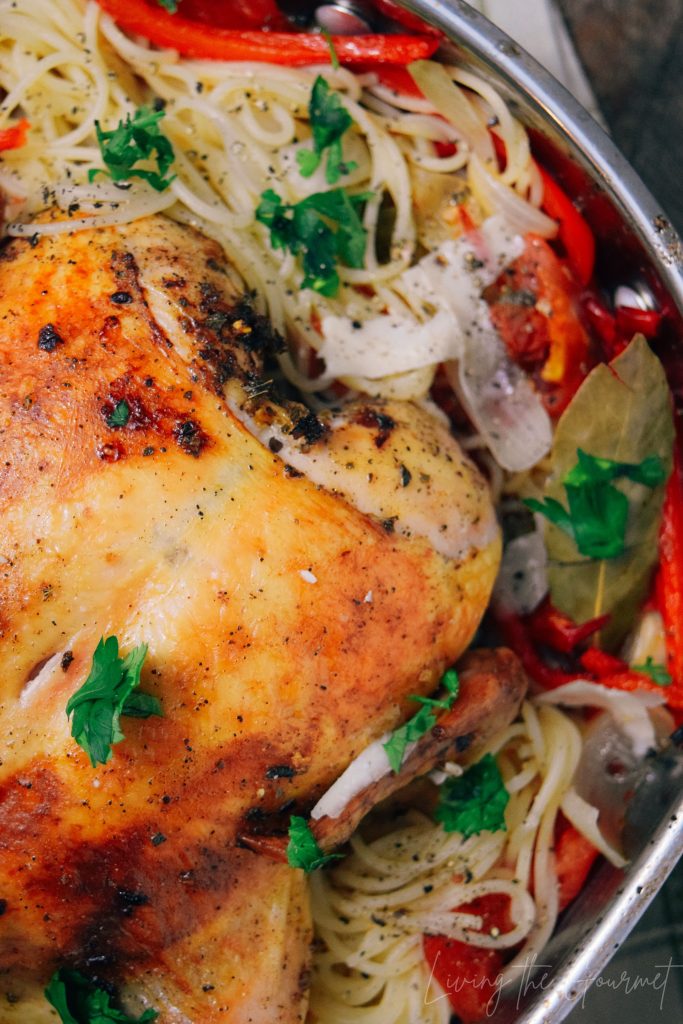
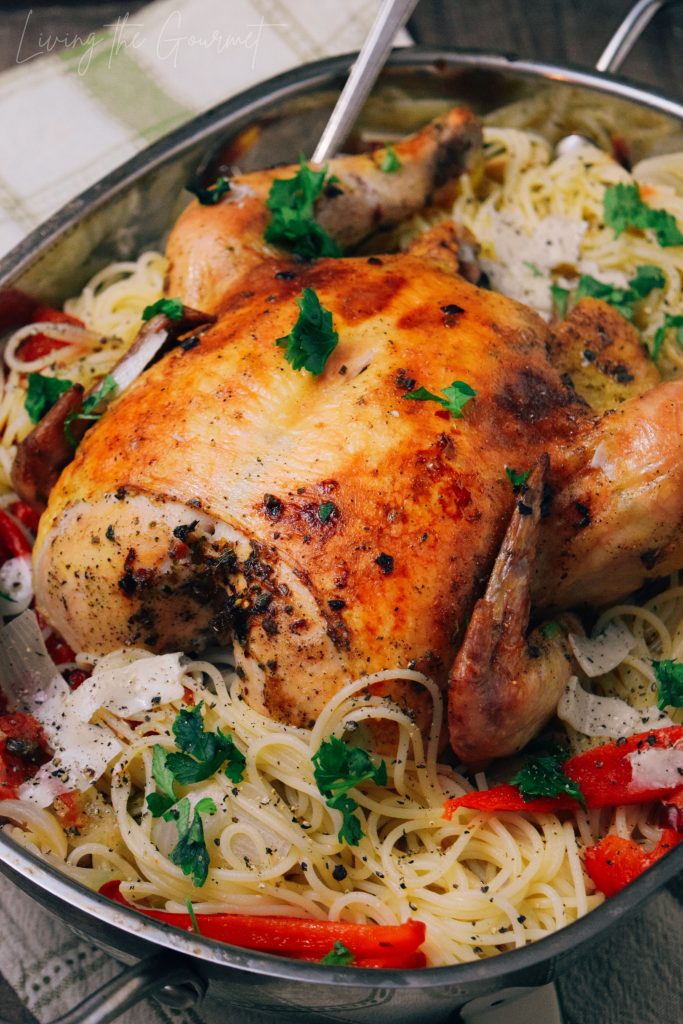
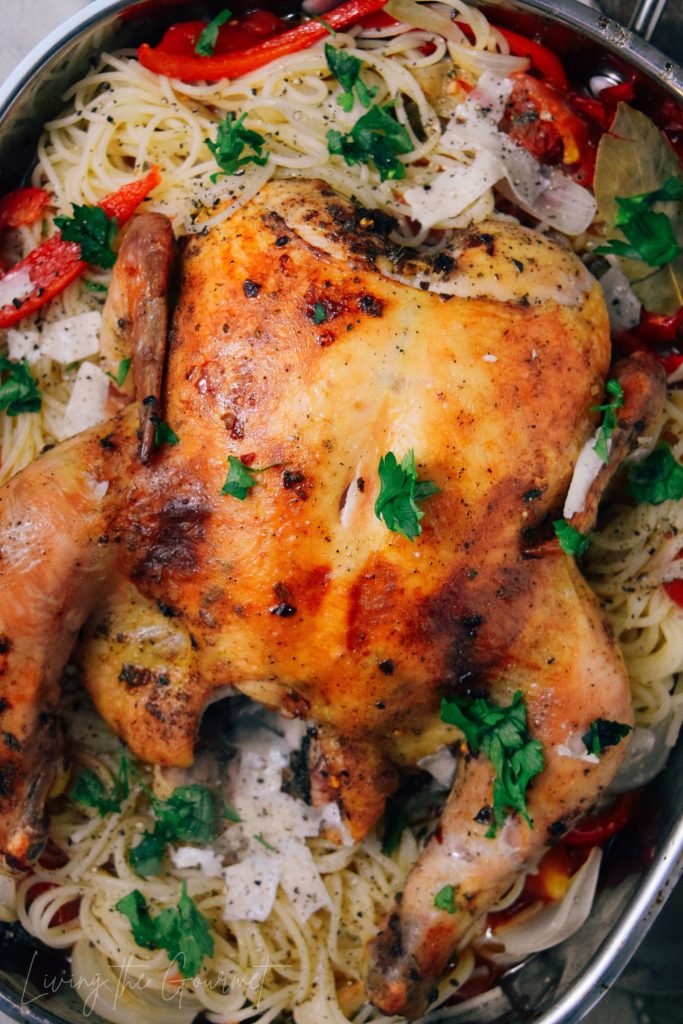
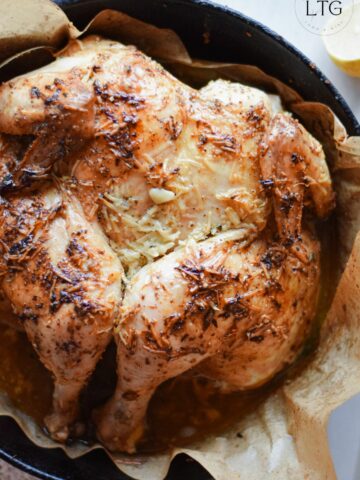
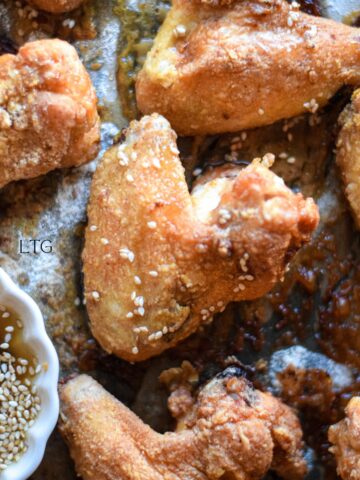

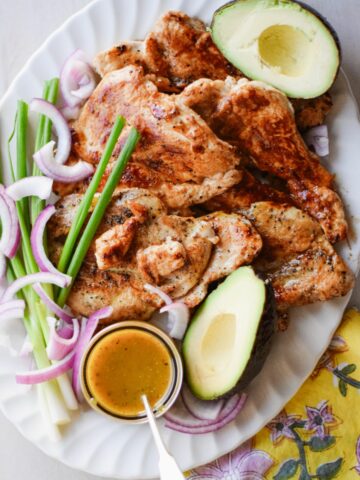
DAVID J MYERS says
Catherine, That is a beautiful roast chicken and I love the idea of serving it with spaghetti. I'd just have to leave out those bell peppers...can't stand the smell or taste of them. Love the concept though...a change from roasted potatoes or the like. Take Care, Big Daddy Dave
Fay Doyle says
Thanks for this recipe. I don’t actually eat meat but I will send to my friend who loves to cook chicken!
Heather Castillo says
What a great alternative to classic spaghetti. I can't wait to make this for my family.
Malaika Archer says
I like the fact that you add lemon juice to the rub. To me, it adds to the flavour of the meat. Great, simple recipe. I love the twist with spaghetti.
Talya Stone says
I love roast chicken but never would have thought of serving it with spaghetti - what a great idea!
MELANIE EDJOURIAN says
That sounds different. We've never had roast chicken with spaghetti before. The kids would love it.
Squeaky says
This was amazing! I did it slightly differently. I did a spatchcock chicken. Since they take less time to roast, I did the veggies for about 15 minutes to start. Then placed the prepared chicken on top, and roasted at 400° in a convection oven. Skipped the red pepper and added some sundried tomatoes, just because I knew that would be eaten by the kids. I will be doing this again on pasta night for sure!